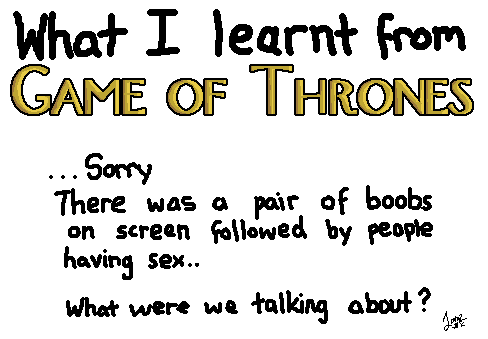Sunday, July 31, 2011
Cristo Redentor
TOKAP with Bullet: Mirror physics



Google Maps of the Week
Saturday, July 30, 2011
The Amazing Google Maps Kaleidoscope
Don’t Be Stupid.
Amending #Google’s motto into something more realistic.
I believe Google should be amending their slogan from "Don't be evil" to "Don't be stupid". They've essentially thumbed their noses up at the very nature of the Internet and the roots of what makes it great. Pseudonyms are a part of the very fabric of what make the Internet what it is, and the culture that has given rise to what we know as Cyberspace. While this has brought both good and bad as a result, I believe the very existence of the Internet as we have today is ongoing proof that the good far outweighs the bad.
In a digital culture such as we have today, everybody is famous in their own way, and pseudonyms comprise an irrevocable part of that culture. To make any attempt to deny that history and legacy is to do so at their own risk.
We live in an era of multiplicity of identity, each having proper context and just as much weight as any other name we may use. In that Google wants only a wallet name shows only willful ignorance on their part in failing to understand that they are dealing with people who are represented by multiple identities, interests, and behaviors, all which are a part of a greater whole of the individual.
In a court of law, individuals are innocent until proven guilty. So too should pseudonyms be addressed - they are acceptable until proven otherwise. It is the individual's right to choose what name they use, not a corporation. This is why there are laws in nearly every country on Earth defining the very legality of using a pseudonym at will for a myriad of purposes farther reaching than a simple social network.
While the Electronic Frontier Foundation states in a recent write-up “A Case For Pseudonyms” that companies like Google and Facebook are entirely within their right to forbid pseudonym usage, they also point out that it is horribly short-sighted and often times damaging and even life-threatening to do so. I'd like to believe that Google is not so blinded by short-sighted goals and profits that they are willing to jeopardize the well-being and even lives of others in the process.
If the purpose of Google is stated as being the intention of bringing all the world's knowledge and information together, as well as the people, then they must understand that they simply cannot exclude a majority of the people or outright deny the culture that gave them this opportunity. If it wasn't for a world full of pseudonyms, Google would have no Internet to dominate. For every person, there are multiple identities, each with distinct metrics and differentiation of personality in context of the virtual space in which they inhabit as their domain. In the eyes of Google, this should account for much more opportunity than they currently seem to grasp.
Yet, while Google and Facebook are entirely within their right to deny the use of pseudonyms and demand a wallet name, the price they pay for doing so may, in turn, be far too high for even them to accept. This fiasco is reaching mainstream media, and even celebrities such as William Shatner are lamenting over their profiles being suspended, while others such as @Skud are continuing with interviews in mainstream media railing against these policies, all for the world to read. Twitter is alight with similar discontent from users who have had their profiles suspended for pseudonymous usage, and as these personal accounts continue to mount in public view, the future of Google+ does not look as bright as it once did. While Google+ may, indeed, enjoy a fair amount of success, it will have willingly sabotaged its own growth and success from what could have been a true game changer.
While Google and Facebook are within their rights to deny pseudonyms and even anonymous usages, surely they are not so ignorant as to fail to understand the maelstrom of bad PR and ill-will they create worldwide in doing so.
While it has been claimed that I somehow believe that avatars are real people, I must contest the oversimplification and misstatement of such. Avatars to me are merely digital representations of a person which bare the context of a virtual environment space pseudonym. As I believe that pseudonyms are just as legitimate as a wallet name in all but the most well defined cases, and are protected and sanctioned by nearly every country on Earth through law, I make my claim that I believe that the context of the pseudonym matters little while the actual usage of the pseudonym matters most. In a digital world, we carry many pseudonyms or possibly just one that is well known or chosen, and each usage of such is entirely dependent on the use context – that being the scenario by which the individual decides what personality best suits the digital arena by which they will participate, while retaining the right to manage their multiple personality order as they see fit.
In the context of social media, such as Facebook or Google+, the right of the individual to freely choose their forward facing personality and context of immersion is a cherished right and not a privilege. As such, an avatar to me constitutes as much of a real person as I would attribute to that of Mark Twain and the works and actions thereof. Simply using a pseudonym in context does not invalidate any part of the person using it, nor does it make the person behind the pseudonym any less real. By association, therefore, an avatar is the representation of a real person and fueled by the actions of the very real person behind it (excluding the actions of an artificial intelligence bot at this time). However, just like anything having to do with digital representations, an avatar on it’s own does not constitute a real person, but instead constitutes the forward facing chosen identity of a real person in proper context to the digital environment space they are currently participating in. Whether that space is a virtual reality or a social media hub is inconsequential as our multiplicity of identity will eventually become cross-domain and interchangeable, and indeed already has despite efforts by companies to the contrary.
This, in and of itself, offers a very profound glimpse into the future of our digital multiplicity, or multiple personality order, in that the concept of “True Names” takes on an entirely different meaning in today’s society than it did prior to the digital age. As a result of this profound paradigm shift, we see today that even large corporate entities such as Google and Facebook somehow are unable to understand the importance of multiplicity of identity, and continue with their attempts to reshape the entire fabric and legacy of what made the Internet and digital culture what it is today.
The final question remains - At what point does the price of their policies become too much to continue? From a perspective of simple common sense, I'd say they've already reached that point, causing more harm to their reputation and social media product than may be reversed before they've managed to make it to an actual launch.
In the end, the point remains: What people are angry about is that their common names are not recognized by Google, and simply offering those people the chance to comply with practices that they already are against is not an answer, in the same light as this "solution" is really further proof that Google is willfully ignoring the very premise of the debate and in doing so, are blatantly insulting the world. If a common name happens to be a Pseudonym, then so be it. There should be no obligation to fill in a field with a wallet name, and a pseudonym should be just as acceptable - if not more acceptable since in many cases, the world is more likely to know the pseudonym than the wallet name.
While I’ve heard the opposite take on this subject, being that we are not “forced” to use Google+ or any of Google’s services, that is much like asserting that a near monopoly of services aren’t forcing you to use them. Simply because a company offers great things, and arguably better than competition, does not constitute a right to demand things from your users that can be dangerous. Yes, as users, we are the commodity not the customer, however I challenge that notion since we are willingly trading mountains of information about ourselves on a daily basis for access to a service, which in turn make these companies a lot of money. We are, indeed, customers in that we are paying for these services with something vastly more valuable than money – our own privacy and identity. The very least we can do is draw a line in the sand for one crucial piece of information that we alone should have control over – and that is our own identity and how it is presented.
Because of this, I have chosen to refer to Google as a company whose motto should be changed to "Don't be stupid." It is far more fitting given the current situation, and bares repeating when a company such as Google seems to have entirely missed the obvious.
Signed,
Will Burns
Object Interoperability Lead | IEEE Virtual World Standards
Aeonix Aeon in SecondLife
Bullet Physics demo 3: Collapsing stack of balls + EXE



Yesterday I got a new idea for a real-time path traced Bullet physics animation: a collapsing stack of spheres. The plan:

I've implemented the scene and physics in both the tokaspt and the Simplex Paternitas path tracers to see the difference in framerate and realism.
Picture from Tokap (some circular artefacts which look kinda cool :) :

Picture from the Futuristic Buildings (Simplex Paternitas) path tracer:

Tokap with Bullet 4 spp:
Futuristic Buildings with Bullet 12 spp:
Futuristic Buildings with Bullet 24 spp:
Futuristic Buildings with Bullet 4 spp, Eagle's view:
"Activation context generation failed for "programme name".
Dependent Assembly Microsoft.VC90.DebugCRT, processorArchitecture="x86", publicKeyToken = "1fc8b3b9a1e18e3b", type="win32", version="9.0.21022.8" could not be found. Please use sxstrace.exe for detailed diagnosis."
World Tour Schedules on Google Maps
Friday, July 29, 2011
TeachMeet2

On the back of the success of our first ever TeachMeet the second one was held on the filthiest night of the wettest July in 60 years. Despite the weather, 70 teachers gave up there own time to travel from far and wide to yet again share ideas around their use of technology and contemporary teaching and learning in (and out of) the classroom. We heard about everything from Year 1 students using digital cameras to stimulate and blend into artwork to using Flubaroo to automatically mark tests, using iPads as dataloggers in Science, Google+ (beamed in from Belgium!) and much, much more. The presentation materials should gradually be appearing here.
Yet again though the real beauty of the day was the networking between the teachers. There were Kindy teachers sharing will HSC Physics teachers, first-year-outs conversing with Principals (yes Principals turned up too!) along with visiting teachers from other parts of Sydney and other school sectors. It was amazing to witness the collaboration and collegiality and an absolute pleasure to be a part of it all. We are already planning the next TeachMeet as we have some real momentum here a lot of buzz.
Many thanks must go out to Domremy College for their exceptional hospitality and to everyone who attended. Particular thanks to those behind the scenes: @pvlies, @timdoyle1, @acoure and @mickprest. TM3 here we come! Please join us or follow on #ceotm and hopefully UStream again.
(Slideshow below courtesy of @timdoyle1)
Real-Estate Heat Map
Geohashing with Google Maps
Bullet Physics in Simplex Paternitas path tracer


This video was rendered on a 8600M GT, 12 spp, 480x360 resolution:
Without caustic noise (only reflective and diffuse balls, 12 spp, 640x480 resolution on 8600M GT):
The new executable and source code are available at http://code.google.com/p/tokap-the-once-known-as-pong/downloads/list
Damn this stuff is really addictive!
Livebookings Live on Google Maps
Thursday, July 28, 2011
New minecraft mob
Google Hotel Finder Arrives
The Elegance of Subtlety
How the smallest details make the biggest impact. #SecondLife
Cinemagraph technique by Jamie Beck: @_frommetoyou on twitter
I’ve always been an advocate for the advancement of immersion in virtual environments and, despite appearances, this almost always entails an attention to detail which otherwise go unnoticed in the grand reveal. The question to me isn’t whether or not such subtleties go without recognition, but whether or not the prospect of attention for subconscious inclusions actually make a lasting impact on the user experience. Many times it is not what we see but what we construct within the confines of our own mind which create a total experience.
This also extends to the realm of what we do not see or experience as well, since the lack of certain expected details often give focus to what remains, and barring that, leave only the inadequate half-immersion which does more to destroy our immersion than to create it.
The subject of this article centers around a photographic technique known as Cinemagraph, in which only certain elements are given motion while the majority of the image remains frozen in time. The brilliance of this technique lay within the notion of selective subtlety in drawing attention to that which would engage the viewer the most in order to tell a deeper story. Remember this as you continue reading.
A virtual environment, then, is the construct of the mind in so much as what we experience is not entirely what is directly implied. The mind is a powerful tool, which when engaged will gladly fill in blanks which we did not notice were missing in order to create a more synergistic and harmonious environment of experience. It is when we, as the creators of these immersive environments, forget such large parts of the environment in our design that the mind of the person experiencing our creation falls short and creates a disconnect. One could say that when the expectations of the mind are not met, there becomes a cognitive dissidence whereby the mind, (instead of easily constructing), is instead focused on reconciling the elements which are either missing or out of harmony.
A simple example of this can be seen in the way that we handle audio in a virtual environment, wherein the majority of constructs simply do not, instead opting to forego the details in this area with the inclusion of streaming music. While streaming music has a place within a virtual environment, it should never be implemented as a designer’s crutch as many of us already do. As such, we begin with a realistic notion of where to begin for the creation of our virtual environments in that when we are bringing our imagination to fruition, we should be willing to adequately deconstruct all of the elements of immersion for our benefit.
While there are quite a lot of examples wherein the concept of complete cognitive immersion has been taken into account, such as the wonderful works of Bryn Oh, we must come to terms with the idea that these examples are shining exceptions to the rule. Too often we create our environments without any further thought into the complexity of immersion or what longer lasting effects the lack thereof will have on our audience. This, to me, is very disconcerting in that what we continually create happens to invoke an experience of repetition or disconnect for the sake of focusing only on one aspect of our environment.
If we were to take into account the idea of virtual environment nightclubs, there are few and far between which offer any experience above and beyond that of a cardboard box which happens to have a shoutcast stream. In what can only be construed as a further misunderstanding of the circumstances involved, our notion of what constitutes an “event” has become so horribly warped that there becomes little difference in simply attending versus an evening elsewhere on the grid.
Should this be by design or intention matters little in the bigger picture because what we are left with in the long tail are categories of events which are about as exciting as spending a night alone. There are only so many times one can participate in a “hunt” before it becomes old hat, and the same holds true for clubs which promote a contest board, which hardly qualifies as a contest by any means – by which I will say “Best In [Insert Clothes Style]” became overplayed a month after the first club owner decided it was a good idea.
An event is much more than this, but we’ve become so accustomed to these lowered expectations that raising the bar at this point would simply be a matter of sitting up from the metaphorical floor.
Qualitative Deconstruction
At best, one can express our current situation as one by which within the early domain of initial design we make smaller mistakes and assumptions which later culminate into larger disconnects within our end-results. It is our own undoing through bad assumptions early in the process which later become issues that likely contribute to the nonexistence of the venue as a whole. Much like a snowball, what looks and seems inconsequential on the onset quickly forms an avalanche which later becomes unwieldy.
Let us focus, then, on the simplicity of audio. For all intents and purposes, this should be the easiest aspect of our environments to master, yet time and again we find that the concept is easier said than done. As a result, most choose to forego the detail of audio immersion altogether and focus on ways to drown out or distract from this glaring metaphor shear. So, too, we see actual environment design without any consideration for the actual environment or the participants within it – focusing only on the predefined goals of the environment intention while giving no second thought, if a first thought at all was given, to what brings it all together.
The elegance of simplicity is what drives the virtual environment, not in the aspect of less is more (though this is certainly true), but in choosing what that “less” will be for the highest impact and immersion. The goal of any virtual environment designer should be, from the beginning, to create a space in which your visitors will feel compelled to not only remain but to bring others with them. In order to accomplish this, you must understand immersion.
Again, in the aspect of audio, we think of things such as ambient audio. Can we close our eyes and not be taken from your environment? There are, arguably, only two real aspects of immersion available to us in virtual environments, two senses which are the foundation – sight and sound. Very few are capable of uniting both in immersion, and fewer still are capable of doing so convincingly.
To elaborate, a shoutcast stream is not your audio immersion - it is supplementary to the audio immersion underlying.
If you turn off the music and the world becomes dead silent, you have failed. Furthermore, automated gestures are not a qualifier for your audio immersion either, just in case you were thinking about using that as your crutch as well. The point is this: If you neglect the ambient audio (the simplicity aspects) you are omitting half of your environment up front. Why on earth would you willingly cut out half of your immersion advantage before you bother to start?
In the area of design, there are countless items I could focus on for immersion, much of which ask exceedingly dumb questions which should not have to be asked, yet it seems nobody has bothered to actually ask them in the first place. For instance, if you force your visitors to traverse a mall at length prior to actually reaching their intended destination, you have failed to grasp many important things about both design and human nature (Blackhearts Café comes to mind).
Blackhearts Café : ★ ★ ★ ★ ★ | How the mighty have fallen… into a pile of spam.
I can easily think of hundreds of ways to avoid that scenario while drastically improving the return and visitor satisfaction levels. Conversely, does the actual experience itself (your venue) extend past the doors in a believable manner? A lot of times that answer is no. In the case of Blackhearts Café they really don’t have an excuse since the entire sim is under their control. I can give other, smaller, venues a pass simply because they have no control over the rest of the sim they reside on. However, I point the finger at the actual sim owners for not planning and enforcing a total design plan. Something so simple and subtle when ignored turns into a clusterfsk later on. Ask Blackhearts Café.
I’d like to point out, however, that while Blackhearts Café seems to have taken a nosedive in quality, (I used to hang out there all the time), there is another club in SecondLife that just goes overboard in the attention to detail. I Love the 80’s wins this hands down and is my new favorite place for the 80’s in SecondLife.
I Love The 80’s: ★ ★ ★ ★ ★ | Clearly they love the 80’s and you.
In much the same manner, if people are only attending your location for short periods of time, and those times happen to be when you are essentially bribing them with contests or prizes, then you are entirely missing the point. It also means that you have absolutely no idea how to create a long term engagement in a virtual environment, unless you count creating a Pavlovian response mechanism of people expecting free money or prizes every time you ring a bell.
I will give a pass to a handful of venues where this is concerned, because they do manage to continually draw a crowd and a DJ in and of itself is not a cause for concern or scorn if you have taken care to actually put thought into the rest of your environment design. Locations such as Fogbound Blues and I Love the 80’s in SecondLife come to mind as an example of design and immersion, although there isn’t much more to be experienced than the staple of dancing, listening to music, and chatting.
If we were to break that down further to base components, we’d find that even those are lowering the bar of expectation to something unrecognizable in that chatting isn’t a novel idea, nor is listening to music, and even the notion of “dancing” in SecondLife is really just an excuse to loop an animation and go AFK for awhile. Not terribly exciting. While I’m not entirely against these things, I’d like to point out that certainly we should be holding ourselves to a higher standard than even this. I’m sure I could point out the audio immersion portion and apply it to in-world clubs, and while internally I actually do, externally I am giving them a pass with just a heads up that there needs to be more.
Fogbound Blues: ★ ★ ★ ★ ★ | Excellent Design, Great Staff, Definitely Worth a Visit
The question then becomes: “What else is there?”
Is the simulation in synergy? That is to say, are there many elements which are unrelated through the simulation space which are tied together in order to create a wider immersive offering? Once again, we are focusing on the overall design aspects as well as attention to the simplicity of certain details which we often overlook.
If you own a storefront in the virtual world, the question becomes whether or not you have thought about the totality of the experience that you are creating or if you are relying purely on a DIY experience of automation. If your store has little differentiation to the counterpart available on Marketplace, then we must ask the obvious question of why anyone would bother to visit your store. In limited cases, I have experienced a viable answer to this question in that the customer service aspect becomes the reason for in-world participation, by providing something that the automated catalog online cannot – human interaction.
When I visit a storefront, my immediate criteria is usually whether there is an in-store representative during reasonable business hours of operation. Think about your store for a moment and ask yourself that same question realistically. If you were to walk into a store and find that there was a representative but that representative was nonresponsive, or in the case of our beloved SecondLife an automated bot with a canned greeting, does this somehow devalue the experience? The answer is of course, absolutely. It says to your patrons that you cannot be bothered to spend time in your own store, yet somehow expect your customers to do so.
Whether you are a busy designer or not isn’t part of the debate, because if you are actually that busy, then you would also understand the concept of micro-management and hiring a staff in order to split the workload appropriately and free up your time personally to focus on the things that only you are capable of doing.
Bax Coen: ★ ★ ★ ★ ★ | Well Designed, Good Products, and Customer Representatives
For this, I give stores such as Bax Coen my appreciation in that the owner definitely understands the merit of attention to elegant subtlety and provides application of the theory. When you arrive there, not only are you greeted by a well designed store, but you are often times actually greeted by an in-store representative whose sole purpose is to help customers. This is one of those elegant subtleties which often is overlooked when taking into account an entire environment.
To a lesser extent, Lapointe and Bastchild offers similar treatment in that there are representatives on duty to help you with your shopping or questions sometimes. I am not certain if this is ongoing or whether the times I happened to be there that there were representatives, but the idea is sound. Revisiting the main store, I found it to be completely devoid, so I can only assume it was a fluke.
On the polar opposite end of the spectrum, we see large name such as Blacklace and Alphamale wherein, while the store and selection are top notch, offer nothing in the manner of differentiation for why using an automated DIY Marketplace to shop for their products would be less beneficial to actually attending their in-world store.
The same can be stated concerning [hoorenbeek] with the exception that the sole benefit seems to be that the marketplace offering is limited compared to the in-world store, although the product displays in-world are excellent, I find the lack of actual customer service representatives in a large brand name store like [hoorenbeek] to be somewhat disturbing. There is definitely room for improvement, despite their products being great.
Alphamale & Blacklace: ★ ★ ★ ★ ★ | Excellent design, clothing is top notch. No staff.
Epilogue
Generally speaking, we can focus on any number of things having to do with our virtual environments, but the biggest game changers are often the smallest and most subtle ones. Ambient audio changes everything around you, attention to details when designing and building shows a level of caring usually not given, and actually thinking in advance how to make your environment work in synergy goes a long way to a successful virtual space.
You’ll know you’ve gotten it right when you can take away the contest boards and stupid gimmicks only to find that people continue to stick around for many hours – even when you aren’t there to watch over your own place.
If you have to force people to do something or invoke gimmicks or bribery to attract a crowd, you’re going down the wrong path.
Just remember… The Elegance of Subtlety.
TOKAP with Bullet demo 2

http://www.youtube.com/watch?v=33rU1axSKhQ
The above video was rendered on a ultra-low end GPU (8600M GT). The animation should run at 60 fps on a GTX 580 at 8spp at default resolution. Physically accurate lighting + physics in real-time!!!
Caustics:

Download the executable at:
Russian Greenpeace on Google Maps
One Day on Google Maps
Tube Directions Now On Google Maps
Wednesday, July 27, 2011
Hand Drawn Maps on Google Maps
Latest version of Futuristic Buildings with AABB

London Olympics Tweet Map
Live Symphonic Balloon Tracking
Tuesday, July 26, 2011
What I learnt from.. Game of Thrones

But seriously go watch it. It's a good show.
Australian Social Diversity on Google Maps
Taking Flight with Google Maps
Munich's S-Bahn Live on Google Maps
VoxelPipe paper and a preview of real-time path traced global illumination
"Finally, in Figure 5 we show a proof of concept of a real-time global illumination system that we plan to disclose in the near future. The system relies on our voxelization pipeline to create a proxy of the scene geometry that is used to trace incoherent rays. The proxy is rebuilt every frame, allowing support of fully dynamic geometry, materials and lighting."
How to Make a Campus Map
Photo dump #4

Rofl waffle.

Do the monkey

What's up bitches? Represent!

Which came first the chicken or the egg? They're fighting about it.

Scratch and sniff bunny.

Thriller animation. This started my Friggin Zombie webcomic.























